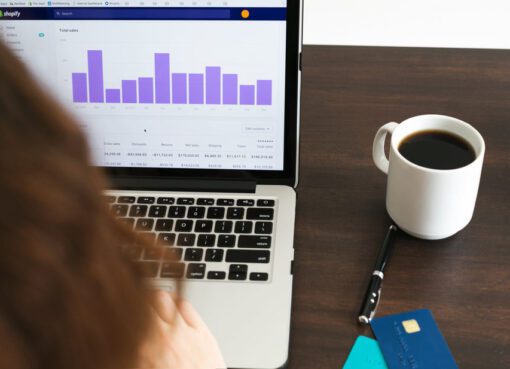Top Data Science Use Cases in Banking
Banking is one of the most data-driven industries in the world. With the rise of data science, banks are leveraging it to gain better insights into their customers’ data, combat banking and wire fraud, and provide customers with targeted and personalized marketing and financial offerings. .
1. Financial Risk Analysis
In order to make informed decisions about risks, banks need to have access to large amounts of data. Predictive analytics can help identify patterns in debt repayments and other obligations. In addition, AI-based credit scoring can help identify risky borrowers and also map Portfolios at Risk (PaR) and Value at Risk (VaR). In the securities and capital markets, banks and other financial institutions use Data Science to identify viable businesses that are healthy financially. These insights help banks make sound investment decisions.
2. Records and Documents Management.
Banks have to deal with hundreds of thousands of customers and other stakeholders. This creates a trail of paperwork that is a nightmare to anyone. Thankfully, Data Science helps to deal with that. By using machine learning algorithms, banks can detect and prevent potential security breaches by automatically tracking important documents such as contracts and loan applications. This process can be streamlined with automated document management software that keeps track of all changes made to files so that they are always up-to-date.
3. Customer Relationship Management
Predictive Analysis tools of Data Science can provide insights into the behaviour of customers. By understanding how customers behave over time, banks can better understand which marketing strategies work best and which ones need tweaking. They can also understand which products and offerings resonate with their customers and which ones don’t.
4. Wire and Fraud Detection
In recent past, there have been a lot of cases of fraud in the banking industry especially with the advent of mobile and e-banking. Despite being convenient for customers, tech-savvy cyber criminals have found it as an ideal avenue to perpetuate crime. By using data sources and machine learning algorithms, automated fraud detection systems can quickly identify unusual banking activity. Corrective adjustments can then be made to neuter future attempts.
5. Predictive Analysis for Personalized Recommendations
The banking sector is amongst the most competitive in the professional world. Organizations therefore frequently innovate to target customers with offerings and products that resonate with them. And this is where Data Science comes into play. With predictive analytics, you can easily create personalized recommendations for your customers. By analyzing your customer’s data and identifying trends, you can create marketing campaigns that are tailored to their specific needs.
6. Automation of tasks
Banks are utilizing Data Science’s automation tools for operational efficiency. By automating certain tasks or processes, banks are able to reduce costs while still providing high-quality service levels for their clients. Automation allows banks to quickly take measures necessary for protecting themselves from potential risks while still maintaining a high level of service quality for clients.


Advantages of Data Science to Banking
1. Data Science saves valuable time. Investing in data analytics can streamline operations and saves employees time. The right solution organizes data, and eliminates spreadsheets, freeing up the gray space in any organization. Employees can quickly locate what they’re looking for, allowing them to focus on the tasks that are most meaningful to the institution.
2. Secures compliance to financial and regulatory authorities. The regulatory environment for financial institutions is complex, and regulatory non-compliance can lead to major fines or enforcement actions for banks. Data analytics incorporates technology into the compliance and risk management processes, improving bank security by reducing the likelihood of human error and quickly detecting potential cases of fraud.
3. Create Detailed Customer Profiles. All financial institutions want to know their customers better. Data analytics help generate detailed profiles that reveal valuable information, such as spending habits and channel preferences. Banks can create highly specific segments with these profiles and pinpoint timely cross-selling opportunities.
4. Empowers Employees. Empowered employees improve the customer experience; happier customers contribute to empowering employees. A powerful part of this cycle is data analytics. Data analytics produce actionable insights that save employees’ time so they can focus on what’s important. Banks can send timely, data-based relevant messaging, based on customer-expressed preferences and interests.
5. Data Science Improves Performance. More time spent connecting with customers allows employees to build a deeper understanding of their financial needs and ultimately improve the bank’s performance. The right data analytics solution leads to a more productive and profitable financial institution. Using data to its fullest potential allows banks to make better strategic decisions, identify and act upon growth opportunities, and focus on performance.
Conclusion
Data Science is a powerful tool for banks and financial institutions. With the competition hitting fever pitch, the utility of Data Science has never been more apparent within the banking industry.
Thankfully, Data Science is not a reserve of any particular field or industry. With world-class Data Science training coupled with intuitive teaching methodologies, anyone within the banking industry can upskill and harness the full power and utility of Big Data in the Banking industry.
We have a firm belief that every organization has a unique purpose only they can fulfil in this world. We work with you in organizing your resources to exploit opportunities so that you can fulfil your purpose and realize full potential. We build the capacity of people, processes and systems for organizational success and growth as well as nurturing a thriving ecosystem.
Ready to enhance your skills and boost your career? Explore our corporate training programs now and start your journey to success.








Comment here